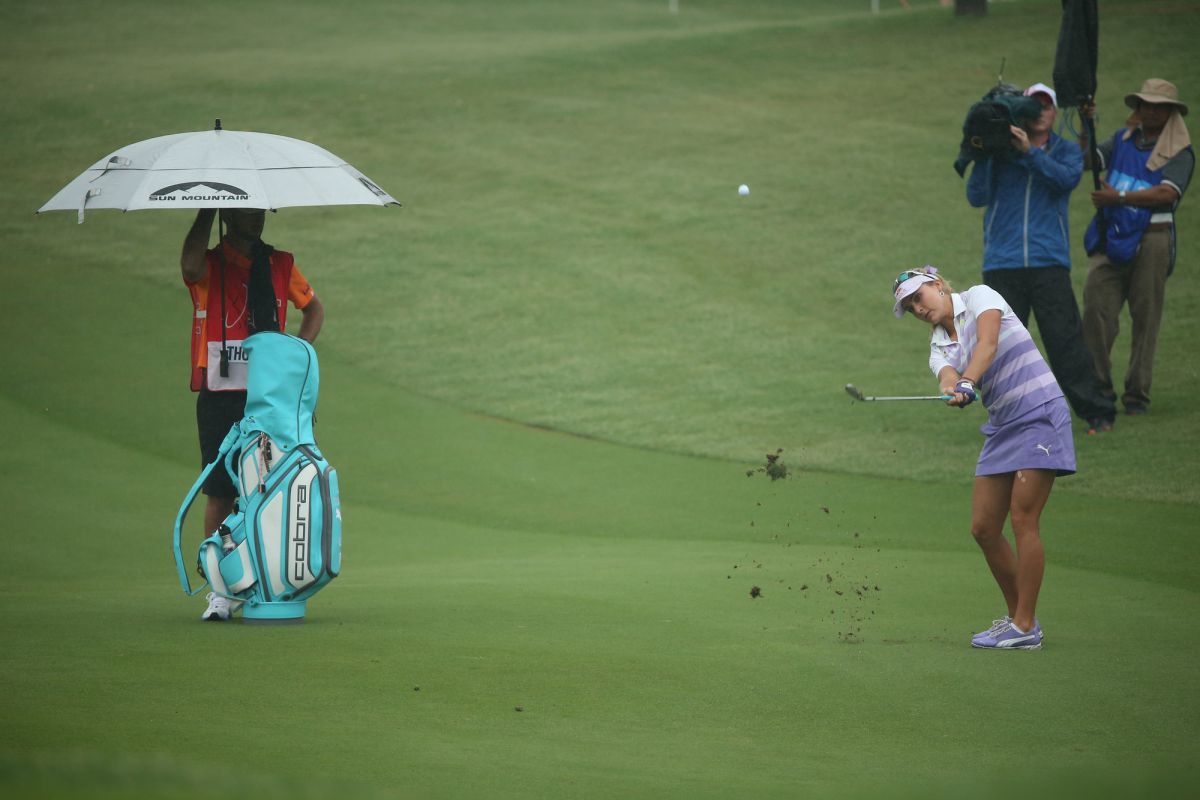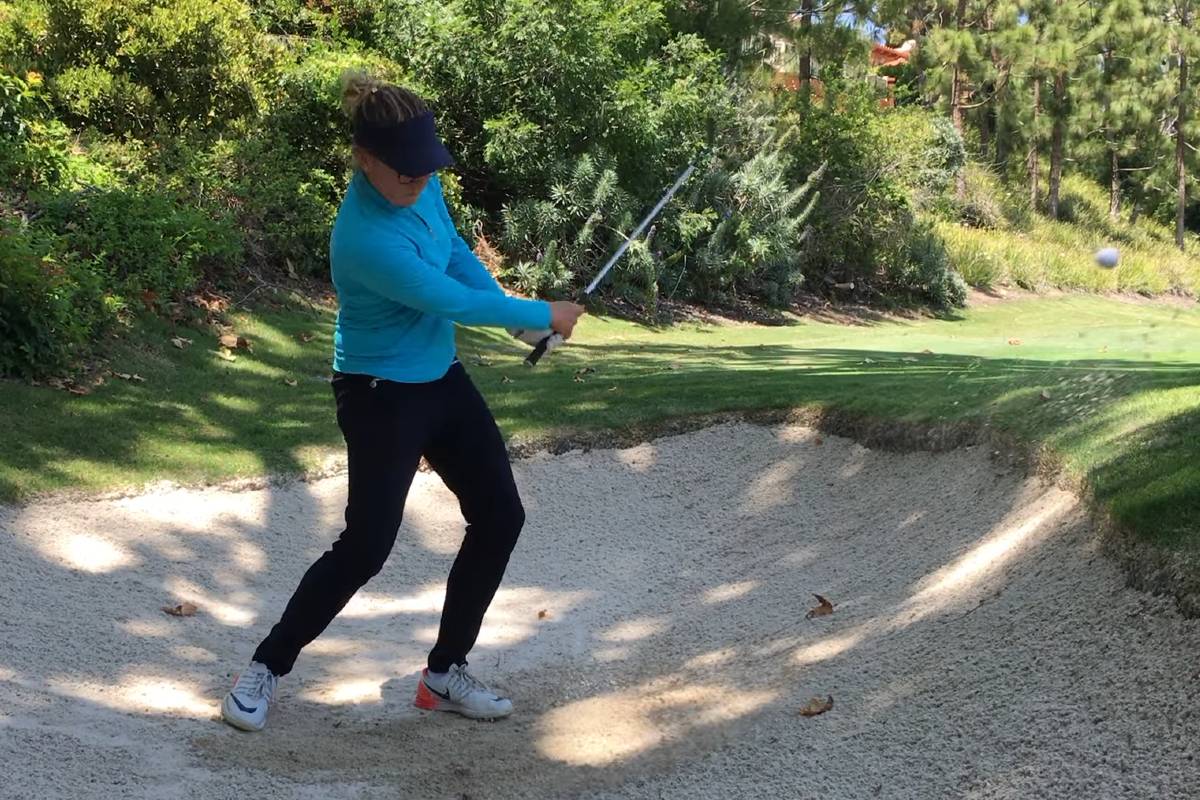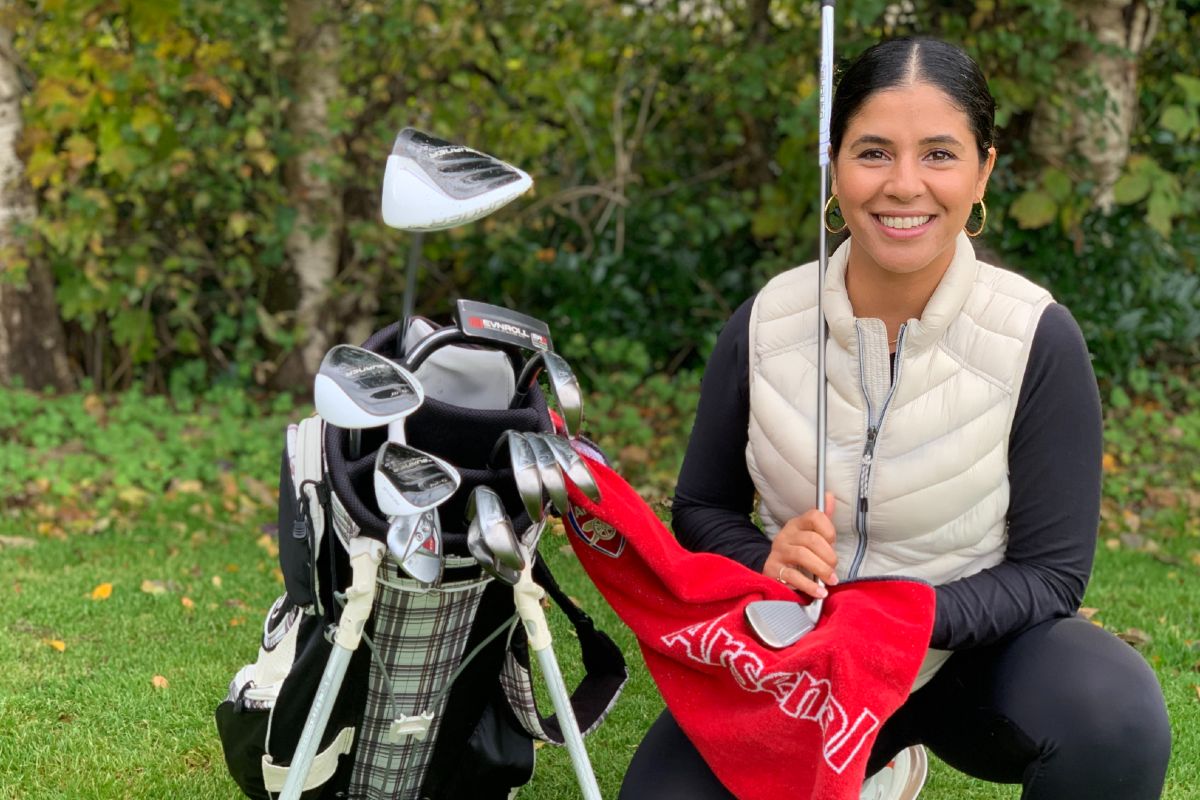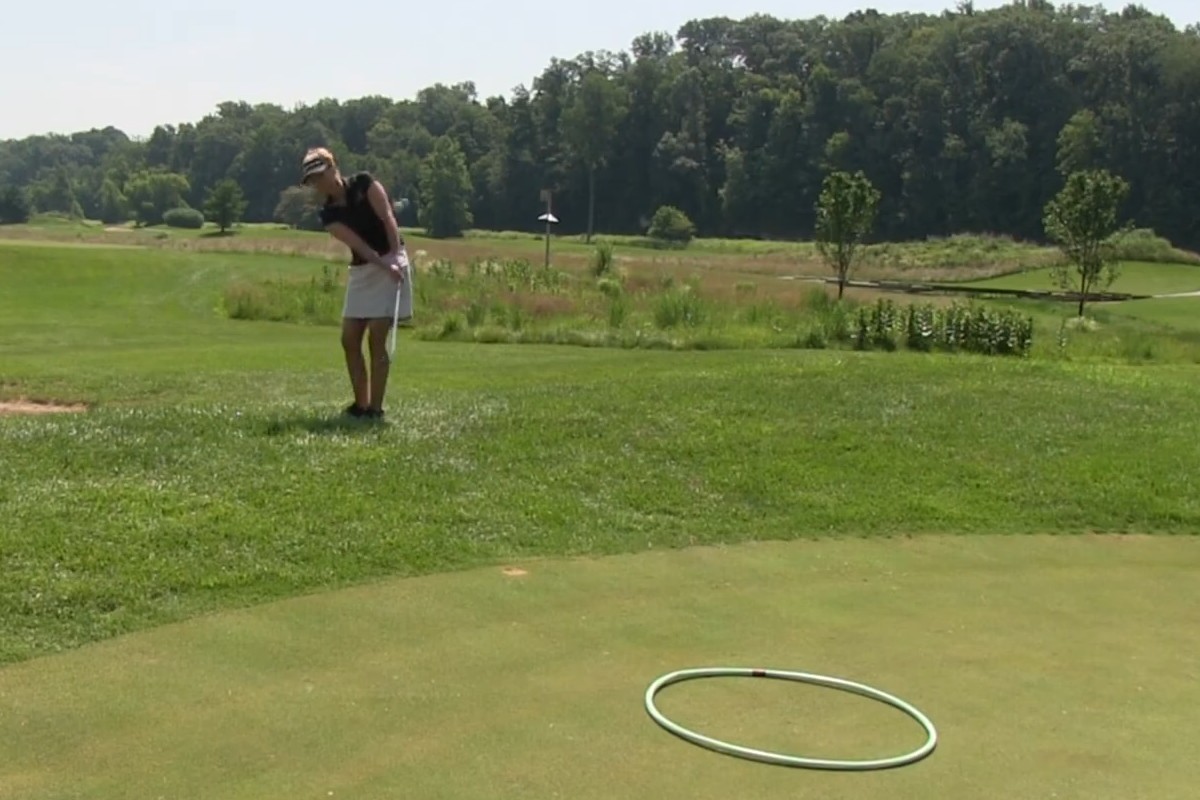To create a golf shot, you need to brush grass and/or take a divot. It is the only way the ball will climb the clubface loft to get into the air. No grass…. No up!
The perfect divot is taken AFTER the ball is struck, as per design of the golf club and related to your movement through the golf ball. It is approximately half an inch deep and evenly skimmed off the surface. The golf swing is a circle, and this circle is tangent to your target line (remember your geometry class in high school?). Therefore the divot will be relatively straight on the target line, even though this is not the swing path. Often the ideal divot is described as a “dollar bill” on the target line.

There are a couple of things that need to happen in your swing to take a good divot when you hit a golf ball. First, you must shift your weight from back foot to front foot. It is the way the golf club comes into contact with the ball… ball first then ground, only if you transfer your weight from right to left.
This weight transfer puts you into a position with your upper body slightly back and your lower body forward as it is in most throwing and striking sport activities. This slight backwards tilt puts you closer to the ground than when you first addressed the ball which means your club will now enter the ground and take a divot if you keep your arms extended through the shot. The only way you will hit it fat with this fundamental is if you do not get off of your right side. Although it sounds contradictory, a correct divot will be produced with your head/torso back and your weight on your left side at impact.
Keeping your arms extended through the shot is another thing that needs to happen to take a good divot. When you address the ball, your arms are naturally in an extended position, often with gravity helping to extend them. If you can keep your arms supple yet extended through the swing, the weight of the golf club, once set in motion, will keep your arms extended to and through impact. At impact, therefore, your club is descending as it hits the ball (because you are making a good weight transfer). Once the ball is released from the clubface, it continues on a downward arc which bottoms out just past where the ball was, thus taking a divot AFTER the ball is hit.
NO DIVOT
If you don’t take any grass or divot, it could be that your arms are buckling at impact or you that your spine angle changed from where it was at address. Working on a balanced set-up coupled with tension reduction could help if you are not taking any grass.
DIVOT POINTING LEFT OF TARGET
If your divot points to the left of your target, it could be telling you that you are starting your downswing with your arms instead of your lower body (think step…then throw). Hitting with your arms causes the upper body to lean to the left on the way down. Leaning this way at impact changes your swing path to the left instead of in a circle, resulting in a divot that points left. Working on a good weight transfer will help if your divots are pointing left of the target.

DEEP DIVOTS
If your divots show up behind the ball or if they are deep, it could be that your upper body is too low at impact. This can happen when you swing hard with your arms and can also happen when your weight does not get transferred to your left side. Working on weight transfer and tempo/tension reduction could help with deep divots.

DIVOT POINTING RIGHT OF TARGET
If your divot points to the right of your target, it could be telling you that your club is swinging out to the right too much. This might be due to your lower body sliding laterally through impact. When this happens, it causes your upper body to tilt too much to the right through impact. The more your body tilts to the right; the more your path will be out to the right, creating a divot that points right. Working on a good compound pivot (weight transfer and turn) could help with divots pointing to the right.
DIVOT BEHIND THE BALL
If you are hitting the ball fat, it could be telling you that you are too flat footed or too much on your right foot at impact. If the weight hangs back on your back foot, your upper body will tilt too much to the right, reducing the amount of clearance for your swing arc, making it bottom out behind the golf ball. Working on a good weight transfer could help with divots that are behind the ball.
In summary, a good divot occurs AFTER the ball is struck and will look like a shallow rectangle on the target line. You do not have to “hit down” on the golf ball to create a good divot. If you pivot correctly and utilize gravity with good tempo and tension reduction, the divot will happen. No need to take a divot on purpose unless there is a unique lie that promotes such action.
Remember, NO GRASS…. NO UP!
Deb






